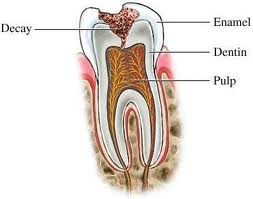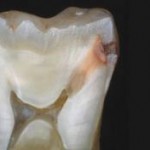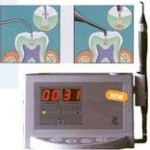Although the evidence shows that many diagnostic methods are less than desirably accurate, current diagnostic interpretations still must be used until new, more sensitive, techniques are available and validated. The evidence-based reports supported previous caries experience and pathologically low salivary flow rate as indicators of significant risk. Most studies from the systematic reviews involved children and excluded root caries, adults, and anterior teeth. Therefore, the clinician must extrapolate reportedly successful preventive and arresting/remineralization techniques from children to adults, root caries, and anterior teeth. In the absence of clear evidence on adequately sensitive diagnostic methods for detecting early noncavitated lesions and risk assessment indicators, clinicians need guidelines for treatment.
 Because research is still evolving in these areas, a series of guidelines created by consensus groups using currently available information is needed for patient treatment. In the absence of definitive evidence, choices must come from highly probable information. Selection of interventions and evaluations of known risks need to be guided by quality studies and literature.
Because research is still evolving in these areas, a series of guidelines created by consensus groups using currently available information is needed for patient treatment. In the absence of definitive evidence, choices must come from highly probable information. Selection of interventions and evaluations of known risks need to be guided by quality studies and literature.
Other reviews of literature and higher quality clinical studies are needed to contribute to these guidelines. From guidelines, appropriate treatment(s) can be chosen. Examples of such guidelines already exist.
Longitudinal studies with outcomes assessments are needed to determine the success of specific treatments. Long-term retention and functioning of treated teeth without recurrence of caries are essential outcome criteria. As evidence of better diagnostic methods, improved treatments, and clearer definition of risk indicators is established, treatment guidelines can be appropriately refined and individualized for the patient.
 The dental profession has been successful in promoting caries prevention. Current information indicates that the opportunity now exists to extend prevention and treatment of caries to nonsurgical methods. These include further prevention, remineralization, and arrest of early noncavitated lesions. Controlled longitudinal studies that inform third-party payers can do much to support the adoption of more advanced diagnostic, preventive, and nonsurgical techniques into the practice of dentistry. Studies that explore a range of reimbursement options may be helpful in identifying reimbursement methods that both encourage and reward preventive nonsurgical dental treatment. Practicing dentists must have adequate incentives to apply these findings. Educational institutions and their curricula, state and national dental boards and board examiners, and accreditation agencies must also support the growing evidence for prevention and nonsurgical treatment where indicated.
The dental profession has been successful in promoting caries prevention. Current information indicates that the opportunity now exists to extend prevention and treatment of caries to nonsurgical methods. These include further prevention, remineralization, and arrest of early noncavitated lesions. Controlled longitudinal studies that inform third-party payers can do much to support the adoption of more advanced diagnostic, preventive, and nonsurgical techniques into the practice of dentistry. Studies that explore a range of reimbursement options may be helpful in identifying reimbursement methods that both encourage and reward preventive nonsurgical dental treatment. Practicing dentists must have adequate incentives to apply these findings. Educational institutions and their curricula, state and national dental boards and board examiners, and accreditation agencies must also support the growing evidence for prevention and nonsurgical treatment where indicated.
4. What are promising new research directions for the prevention, diagnosis, and treatment of dental caries?
In prefacing the listing of promising new research areas, it should be noted that the Panel identified significant concerns about the nature of previous clinical research on dental caries. The science of clinical research design has advanced rapidly in the past several decades. However, the panel deemed that the design and execution of caries trials and epidemiological studies have not kept pace with the current standard. Many previous clinical caries studies were neither well designed nor well analyzed. They tended to be small, underpowered, improperly controlled, and incompletely described. Thus, when subjected to modern systematic review techniques, the overall quality of the database was judged usually to be in the range of poor to fair.
Accordingly, NIDCR should expand significantly its clinical and research program to match the recent expansion in clinical training to promote improvement in the quality, size, and reporting of clinical dental caries studies and the number of well-trained clinical investigators. In the future, it will be imperative that markedly improved techniques be applied in each clinical study. In the interim, it would behoove clinical caries researchers to consult widely with clinical research methodologists and to ensure that their studies adhere to national and international criteria for reporting of studies as used in systematic reviews. In this manner, the successful exploration of the clinical opportunities listed below will be facilitated.
Major Clinical Caries Research Directions
- 1. The Epidemiology of Primary and Secondary Caries needs to be systematically studied with population cohort studies that collect information on natural history,  treatment, and outcomes across the age spectrum.
2. Research into Diagnostic Methods, including established and new devices and techniques, is needed. Development of standardized methods of calibrating examiners is needed.
3. Clinical Trials of established and new treatment methods are needed. These should conform to contemporary standards of design, implementation, analysis, and reporting. They should include trials of efficacy.
4. Systematic research on caries Risk Assessment is needed using population-based cohort techniques.
5. Studies of Clinical Practice including effectiveness, quality of  care, outcomes, health-related quality of life, and appropriateness of care are needed.
6. Genetic studies are necessary to identify genes and genetic markers of diagnostic, prognostic, and therapeutic value.
